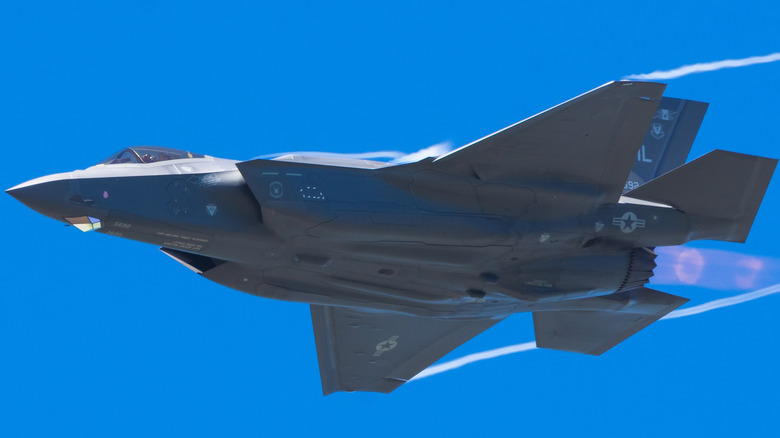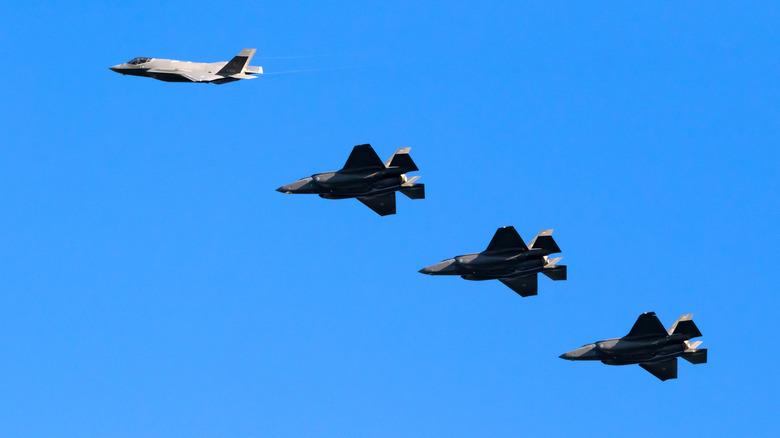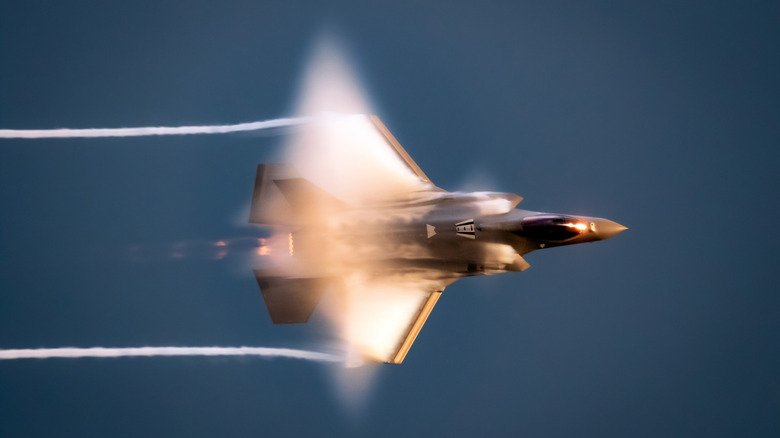Which Countries Have Been Banned From Buying The F-35 Lightning II By The US?
In October 2020, Reuters reported that cash-flush Qatar submitted a formal request to purchase F-35 Lightning II jets from America. In response, Eli Cohen — Israel's Intelligence Minister at the time — firmly stated that Israel would oppose any proposed sale to maintain its military superiority in the region. The deal, if pursued, would have likely strained America's relationships with not only Israel, but also other Middle East allies like Saudi Arabia and the United Arab Emirates. All of these countries have a fractious relationship with Qatar.
Qatar is not alone on the "No Sale" list for the F-35 Lightning II. The U.S. also turned down a request from Thailand, citing "issues with training and technical requirements." Taiwan was also reportedly interested in acquiring the military aircraft, though that deal was most likely dead on arrival. Due to the historically troubled relationship between China and Taiwan, it's highly probable that granting the request would trigger a firm reaction from Beijing, something the U.S. is keen to avoid. Then there are obvious examples like Russia, North Korea, and Iran.
It's impossible to imagine any scenario where the U.S. would willingly allow the sale of an F-35 to those countries. Perhaps the most surprising inclusion here is Turkey, a major U.S. and NATO ally. The U.S. kicked Turkey out of the F-35 program, citing its purchase of Russian S-400 Surface-to-Air Missile systems as the reason, amidst fears that such a move represented a grave security risk. In 2024, it was reported that Turkey was considering giving up the S-400 SAM systems in order to be re-admitted to the program. Until that happens, however, Turkey remains on the "No Sale" list.
The F-35 Lightning II is an alpha aerial warfare platform
It is understandable that these nations would love to get their hands on America's premier multirole combat aircraft. The F-35 Lightning II is a fifth-generation fighter jet, part of an elite class that includes some of the most advanced fighter jets in the world today. These jets are characterized by their cutting-edge stealth capabilities, enhanced situational awareness, and an impressive weapons payload. The name "Lightning II" pays homage to Lockheed's World War II P-38 Lightning aircraft and U.K.'s English Electric Lightning, a supersonic fighter that entered service in the 1950s.
In 2001, Lockheed Martin, partnered with Northrop Grumman and BAE Systems, won the contract to develop the F-35. It was billed as a cutting-edge platform capable of fulfilling diverse mission requirements and enhancing national security. The F-35 program has been a complicated one since its inception, and at times, an embarrassment for the U.S. government. According to the U.S. Government Accountability Office, the F-35 program will carry a price tag north of $2 trillion over its lifespan, making it the world's most expensive weapons program.
The F-35 Lightning II first took to the skies in 2006, piloted by Lockheed Martin Chief Test Pilot Jon S. Beesley. However, it was not until 2011 that the first deliveries of the $100m+ fighter jet commenced, with the U.S. Air Force and U.S. Marines among the first customers.
The F-35 Lightning II is a combat-proven platform
The F-35 Lightning II has no doubt travelled a rocky road from conception to production. However, that should not detract from its capabilities as a top-tier military platform, capable of engaging in air superiority and strike missions. It can also carry out advanced electronic warfare, surveillance, and reconnaissance deep in enemy territory. The air-superiority fighter has had several opportunities to demonstrate its impressive capabilities since it officially entered service in 2015. The F-35 Lightning II had its combat debut in 2018 when it was deployed by the Israelis (a top F-35 customer) on operational missions.
Since then, there have been other documented F-35 missions. In April 2019, the U.S. deployed a pair of F-35A Lightning II fighter jets to strike ISIS targets in Wadi Ashai, Iraq. That incident marked the first time America would wield its fearsome jets in battle. The U.S. Marines also got in on the action in the winter of 2019 when it deployed the F-35B, its own variant of the air-superiority fighter, to hit Taliban targets in Afghanistan.
In 2024, the Israelis unleashed the F-35I Adir — its own F-35 variant — to strike targets associated with Houthi rebels in Yemen. The jets were supported by Boeing 707 aerial refueling tankers for the trip. In 2020, Israeli F-35s also carried out what was the first combat shoot-down when they intercepted two Iranian Shahad 197 drones before they could enter Israeli territory.
U.S. President Donald Trump recently announced that Boeing will build the Air Force's next-generation fighter jet, dubbed the F-47. Until that future platform becomes a reality, the F-35 Lightning II will continue to serve as a key multirole combat aircraft for America and its allies.


